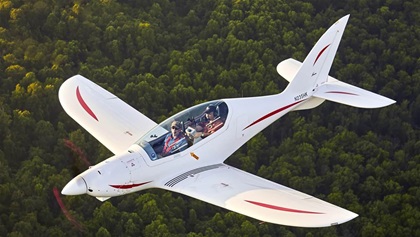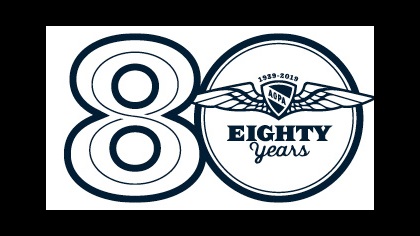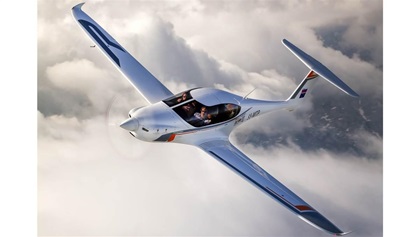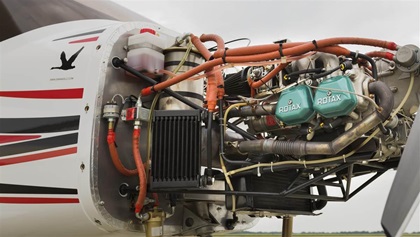Turn and face the change
General aviation today looks a lot like it did 40 years ago—but change is afoot

The fact that this old Bonanza is about as good as it gets all these decades later is either really cool, if you’re a nostalgist, or terribly sad if you’re a futurist. Putting avionics and instrument panels aside for a moment, general aviation has looked pretty much the same for the past few decades. But, futurist, fear not, as change is afoot—or shall we say, aflight?
Always in aviation, engines drive airframe development. Nowadays, though, we should say that “propulsion” drives airframe development, as we are beginning to see the impact of electric motors on airframe designs. As with early automobile development, much of what we see today likely will be relegated to the history books in a couple of decades, but for now we are fascinated with projects such as the Bye Aerospace Sun Flyer 2, a two-place electrically powered trainer that is nearing certification. A four-place variant is also in development. Pipistrel is delivering its two-place Alpha Electro, an electric aircraft certified elsewhere in the world, but hopefully approved as a Light Sport aircraft in the United States—flying at the moment under a special exemption, as the FAA regulations and Light Sport ASTM standards don’t yet recognize electric motors as a means of propulsion. History will undoubtedly look back and ask, “Why?”
The idea of ending a flight by plugging your airplane into the wall rather than calling the fuel truck is intriguing, especially with projections of hourly fuel costs of between $3 and $7. The cost of 100LL avgas averages $5.07 a gallon at the moment, with many locations charging $6 to $8. Converting the existing fleet to electric is unlikely, although hybrid electric may become an option for some.
Converting existing airplanes to diesel engines may be more practical, but diesel development has languished. Diamond Aircraft offshoot Austro and Continental Motors have had some success with diesel engines. However, companies such as EPS—Engineered Propulsion Systems—and DeltaHawk have had various diesel engine models in development for years, always seemingly close to certification, but not quite there. Even then, it is unclear how likely pilots will be to accept an all-new engine, despite frequent complaints about the ancient air-cooled, horizontally opposed engines powering airplanes today, including my old Bonanza. Capable of burning jet fuel, which is widely available around the globe, the diesel-cycle engines offer a lot of promise, but the conversion costs will be high. And with barely 1,000 new piston-powered airplanes being manufactured a year, the new-airframe market isn’t all that lucrative, either.
Removing the lead from avgas would simplify distribution, eliminate the constant threat from environmental groups, and clarify the future for many piston-engine owners. But the development of an unleaded fuel has languished. Regardless, the use of fossil fuels is falling out of favor.
While the fuels effort has proven to be cumbersome, a characteristic of many FAA projects, there have been regulatory wins that may spur some general aviation revitalization. For example, the FAA has seen the light when it comes to allowing proven, modern safety-enhancing equipment to be more easily installed in the legacy fleet.
Part 23 of the federal aviation regulations outlines the requirements a manufacturer must meet to certify a new airplane. AOPA, the General Aviation Manufacturers Association, and other organizations worked with the FAA on a decade-long project to rewrite the onerous regulations into ones that are less prescriptive and more appropriate to the type of flying a particular airplane model is designed for. In other words, moving away from a one-size-fits-all approach into a certification environment that allows manufacturers to demonstrate in simpler and novel ways that the product meets the regulations. The goal is not a lower level of safety. To the contrary, such moves increase the likelihood that companies will develop new, affordable products that take advantage of modern materials and standards—which, in the long run, will improve the safety, reliability, and utility of the fleet. The Part 23 rewrite was fully recognized by the FAA in late 2017. The general aviation world is in a wait-and-see mode to understand what the future might bring as a result. The perspective from 2039 will be interesting indeed.
Meanwhile, the European regulatory agencies—a traditional bastion of mercurial regulatory overbearingness—has seen the light and begun to wind down the onerous maintenance and certification laws it once demanded for light general aviation airplanes across the pond. The European Aviation Safety Agency at one point made the FAA look fleet and not at all domineering. However, starting around 2015, EASA recognized that general aviation was all but gone from the continent and that no one was being served well by its Draconian oversight. As a result it began to back off on its regulations, and began encouraging general aviation activity and manufacturing. The result is several new high-performance light airplanes. Unfortunately none of them fit into useful FAA categories, so they are a bit handicapped if imported into the United States. But it’s another sign that general aviation’s future is bright, as companies develop fast, efficient new designs—most of which, by the way, don’t require leaded fuel or 100 octane.
In fact, we’ve seen Europe as a hotbed of new designs for the past decade or more. It’s as if Wichita went to sleep. Meanwhile, Tecnam, Pipistrel, Flight Design, Diamond, and other European brands have become the Cessna, Beechcraft, Piper, and Mooney of the twenty-first century. The number of deliveries is small compared to the American Big Four in the 1970s, but the innovation is huge. Tecnam, for example, has created a complete product line of airplanes from Light Sport aircraft—trainers and travelers—to a fixed-gear cruiser and a light workhorse of a twin, with more in the works. Pipistrel too has an interesting lineup of ultralights, powered gliders, Light Sports—including the Alpha Electro electric LSA—and the sleek Panthera, a high-performance single still in development and designed for a variety of powerplants, including electric and hybrid diesel-electric. Flight Design has designed a light four-place airplane that may benefit from the Part 23 rewrite’s regulatory changes.
Several recent developments have contributed to this new generation of airplanes: composite manufacturing, lightweight avionics, and the Rotax engine. While Fiberglas has been in use in gliders and Experimental airplanes for decades, Cirrus Aircraft really brought composite manufacturing to the forefront for general aviation in the early 2000s. Modern materials—especially carbon fiber—and manufacturing techniques have further reduced weight and decreased manufacturing time. Meanwhile, modern avionics have allowed the lightest of airplanes and especially LSAs to come equipped with an entire suite of capabilities blended into one screen that may be 10 inches diagonal but only 3 inches deep and weighing just a few pounds. No longer do you need a full six-pack of heavy and cumbersome mechanical instruments to equip your light airplane. A single Dynon display, for example, includes your primary flight display—with synthetic vision, a moving map, an engine management and monitoring system, and a two-axis autopilot. If it fails, swap it out with two connectors. It makes for breathtaking situational awareness in an LSA—features not available at any price 20 years earlier. Now, buy the whole thing for around $5,000.
The Rotax 912 in particular has had a significant impact on how we fly here in the first part of the twenty-first century. Its small frontal area; lightweight, liquid-cooled cylinder heads; and amazing fuel specifics allow its 100 horsepower to propel well-designed LSAs at 120 knots true airspeed on about 3.8 gallons per hour. And while Rotax has been in the aviation business for a couple of decades, only recently have pilots begun to recognize its significance. Meanwhile, the company is working on the 915 iS, a 135-horsepower fuel-injected, turbocharged version. Many industry observers believe it will drive a whole new generation of airframes built from scratch to take advantage of its performance. The challenge for Rotax is developing the knowledge base among mechanics to make service as ubiquitous as it is for a Lycoming or Continental.
 Those new airframe development programs may benefit from another new technology that can fast-track product development: additive manufacturing, aka 3D printing. Airframe manufacturers large and small are already using additive manufacturing to make one-off parts for modeling and prototyping. The process can dramatically reduce turnaround times and costs for small numbers of parts that are needed in product development. With the technology developing quickly, it’s only a matter of time before GA manufacturers routinely make finished parts for production aircraft using 3D printing. After all, at current rates of production, all GA manufacturing is small-run.
Those new airframe development programs may benefit from another new technology that can fast-track product development: additive manufacturing, aka 3D printing. Airframe manufacturers large and small are already using additive manufacturing to make one-off parts for modeling and prototyping. The process can dramatically reduce turnaround times and costs for small numbers of parts that are needed in product development. With the technology developing quickly, it’s only a matter of time before GA manufacturers routinely make finished parts for production aircraft using 3D printing. After all, at current rates of production, all GA manufacturing is small-run.
If that now-very-shiny Bonanza spinner is our crystal ball, the future for general aviation holds promise on AOPA’s eightieth anniversary. The regulatory environment is more welcoming than at any time in decades, which may lead to compelling new designs; powerplant options are emerging for the first time in many years; the demand for pilots is strong, which will help revitalize the flight training industry; and the pace of progress regarding new avionics and systems is breathtaking. This upgraded old Bonanza sports avionics capabilities its builders could not have imagined—and it’s already a generation out of date.
The current avionics capabilities are just a few software updates short of autonomous or semi-autonomous flight, which will undoubtedly be a thing in the future. But for those of us for whom the journey is the best part of the trip, hands-on flying will endure for decades to come. From our perspective, there is no human pursuit more satisfying than the challenge of flying a personal aircraft—and doing it well. The turning of a calendar page is not going to change that.
Email [email protected]


 The recently released book Freedom to Fly: AOPA and the History of General Aviation in America tells the story of 80 years of general aviation—from the forward-thinking Philadelphians who established a voice for “miscellaneous aviation” to the technological advances that transformed the way we fly. This excerpt looks from the past to the future, examining the forces driving change. What will flying look like in the years to come?
The recently released book Freedom to Fly: AOPA and the History of General Aviation in America tells the story of 80 years of general aviation—from the forward-thinking Philadelphians who established a voice for “miscellaneous aviation” to the technological advances that transformed the way we fly. This excerpt looks from the past to the future, examining the forces driving change. What will flying look like in the years to come?



